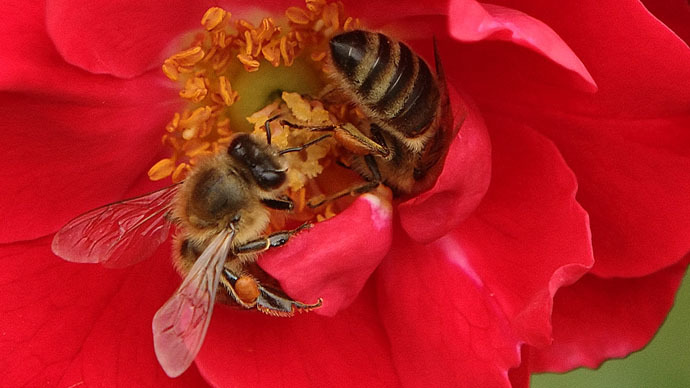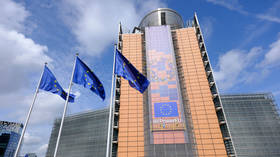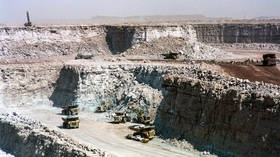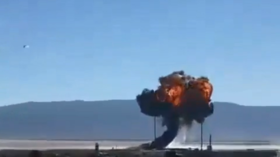40 percent of US honeybee population lost over year, as mysterious die-off accelerates

The number of the so-far unexplained honeybee deaths in the US rose at a significant and “troubling” rate last year, according to a government report. The summer deaths have for the first time outnumbered the winter ones.
Thousands of beekeepers reported losses of 42.1 percent of their colonies in the 12-month period that ended in April, according to the annual survey released by the Bee Informed Partnership and largely funded by the US Department of Agriculture (USDA). That number is more than double the 18.7 percent yearly loss that the USDA considers to be economically sustainable.
“Such high colony losses in the summer and year-round remain very troubling,” Jeff Pettis, a USDA senior entomologist, said in a statement.
The figure is also well above the 34.2 percent loss reported for the same period in 2013 and 2014, and is the second-highest recorded loss since year-round surveys began in 2010.
READ MORE: US honeybee population suffers 'unsustainable' death rate over the winter
Summer honeybee deaths were shown to exceed winter deaths for the first time, with each season registering 27.4 and 23.1 percent losses, respectively.
The die-offs were felt mostly by the nation's commercial beekeepers, who rent their hives to farmers during pollination seasons. Millions of honeybees are needed to pollinate plants that produce a quarter of the food consumed by Americans, and their services have an estimated value of $10 billion to $15 billion a year.
Over the past few years, the bee population has been dying at a rate which has alarmed the US government. In June 2014, the White House created the Pollinator Health Task Force to study the issue.
Though Washington's concern is shared by beekeepers, farmers, and environmentalists, the cause of the massive die-off is still unknown – and has sparked fierce debate within the US.
READ MORE: ‘Beemageddon’ linked to tobacco virus – study
Some have blamed the die-off on a class of insecticide known as neonicotinoids, or neonics, which is used on crops such as corn, as well as on standard garden plants.
However, neonicotinoid manufacturer Bayer CropScience defended its thiacloprid product against bee-harming allegations last month.
The chemical is “extremely safe to bees when used according to the label instructions,” spokesman Dr. Julian Little said, as quoted by the Guardian.
The Environmental Protection Agency (EPA) is issuing a series of studies on the effects of neonics on bees and plants; the first in a series of assessments is expected to be released later this year.
READ MORE: EPA issues moratorium on new pesticides that kill birds and bees
Others have blamed the varroa mite parasite, along with the stresses that bee colonies endure while being carted from farm to farm during growing seasons.
While the survey did not directly address the causes of honeybee deaths, it did say that varroa mites are a much larger problem for beekeepers who keep fewer than 50 hives, as commercial beekeepers are likely on higher alert for deadly infestations.
The survey findings are considered preliminary, as a more detailed report is due to be published later in 2015, the USDA said. The results are based on survey responses from about 6,100 beekeepers managing 400,000 colonies, who represent nearly 15.5 percent of the 2.74 million US bee colonies.












